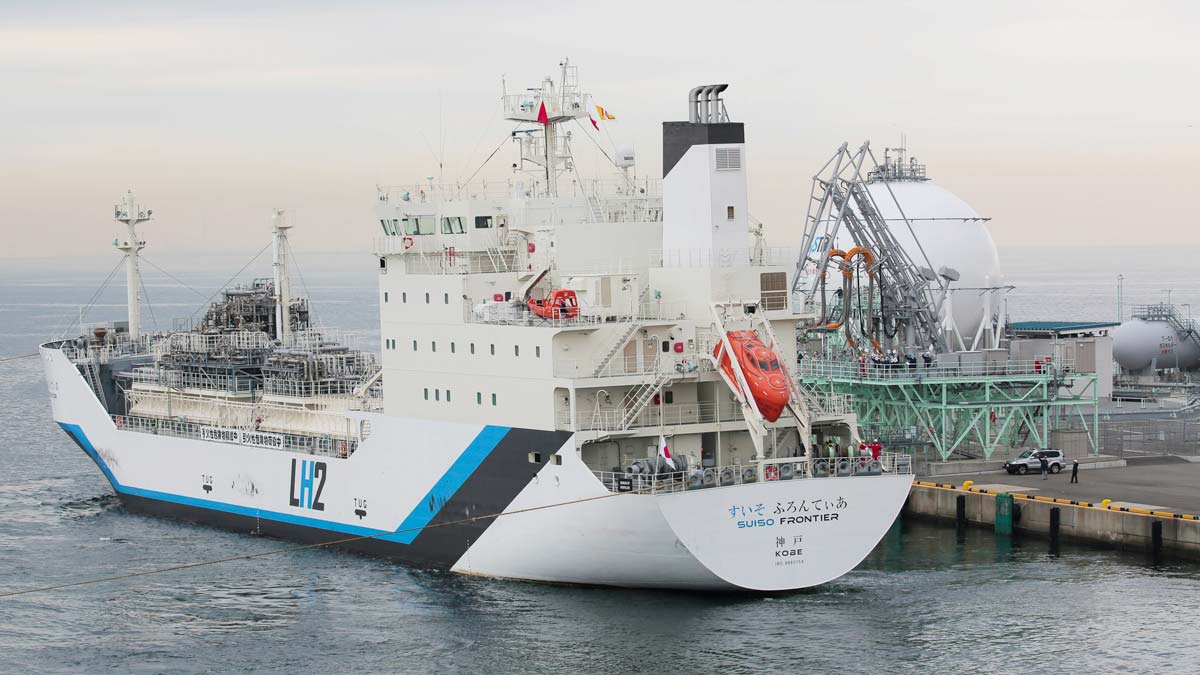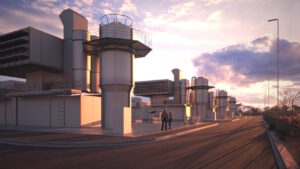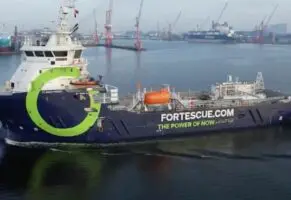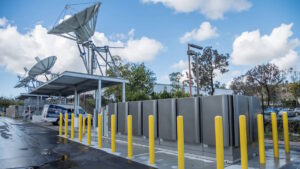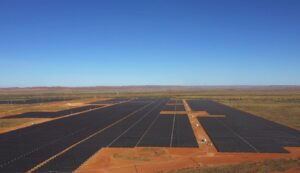Australia’s celebrated first shipment of “clean” hydrogen in January this year has become the subject of an investigation by the Australian Transport Safety Bureau, after a flame was seen coming from the gas combustion unit’s exhaust on deck.
In a notice on its website last updated on Tuesday, more than two months after the incident, the ATSB said it was investigating a gas pressure control equipment malfunction on board the Suiso Frontier after the ship had loaded liquefied hydrogen at Western Port, Hastings.
The Suiso Frontier is a Japan-built dedicated liquid hydrogen transport ship that sailed into the history books in January this year for receiving Australia’s first shipment of liquid “blue” hydrogen – produced through a coal gasification process – for delivery to customers back in Japan.
As RenewEconomy reported at the time, this occasion was widely heralded as a major milestone for the Hydrogen Energy Supply Chain (HESC) project and Australia’s emerging status as a hydrogen exporter – even if it was, in this instance the, wrong colour.
It has now emerged that the historical event was not entirely seemless, but marred by what the ATSB has categorised as a “serious incident,” worthy of investigation – even if it did not make the news at the time.
“At 2147 AEST on 25 January 2022, a flame was seen coming from the gas combustion unit’s exhaust on deck. The unit was immediately shutdown and isolated before the crew implemented the fire prevention response plan,” the notice says.
“No further abnormalities were reported and there were no injuries, damage or pollution. As part of the investigation, the ATSB will interview relevant persons and obtain other evidence, including recorded data.”
According to the ATSB notice here, the investigation is currently in the evidence collection phase, with the completion of a report on the incident expected to be completed sometime in the third quarter of 2022.
A statement from an ATSB spokesperson on Friday confirmed with RenewEconomy that the investigation into the incident has been on the public record since it was first published on the Bureau’s website on 31 January.
At that time it was also reported in trade publication Daily Cargo News, although that report is behind a paywall.
A statement from ATSB chief commissioner Angus Mitchell noted at the time that “a team of transport safety investigators from ATSB’s Canberra, Melbourne, and Sydney offices with expertise in marine operations and data recorders were deployed to the site shortly after the ATSB was notified of the incident.”
The Kawasaki-made and HySTRA operated Suiso Frontier has a hydrogen capacity of 1,250 cubic metres, which translates to around 88 tonnes of liquid hydrogen, and is expected to make numerous shipments of hydrogen between Australia and Japan.
At the time of the January shipment, a spokesperson for the HESC project confirmed to RenewEconomy that it involved the transport of just 2.6 tonnes of hydrogen, the majority which was produced using unabated fossil fuels with just one tonne of the hydrogen produced by the HESC project.
That one tonne of hydrogen was produced using brown coal as its primary feedstock – one of the dirtiest forms of fossil fuel – with the hydrogen being made “clean” through the purchase of carbon offsets.
The remaining 1.6 tonnes of hydrogen shipped were confirmed to have been supplied by project partner Coregas.
Representatives of the HESC project told RenewEconomy that this additional hydrogen – which makes up more than 60 per cent of the pilot hydrogen shipment – was produced from fossil gas.
Ultimately, the Suiso Frontier did successfully deliver the world-first Australian shipment of liquefied hydrogen to Japan, arriving in the the port at Kobe on February 25.

